PURPOSE This study seeks to contribute to the enhancement of the performance of domestic wheelchair racers by producing 3D-printed customized gloves and verifying their application effect. METHODS A total of three male wheelchair racers who belong to the T54 and have won gold medals in the National Para Games within the last three years were selected as subjects. Each subject performed three session s of muscle activity and maximum speed measurements before and after applying a 3D-printed glove during the stroke and recovery phases of wheelchair racing, focusing on the pectoralis major (PM), triceps brachii (TB), and erector spinae (ES) muscles. To standardize the muscle activity measurement data, the relative muscle activity level (%) for each section was calculated by maximum voluntary isometric contraction (MVIC) for each subject. All maximum speeds of each round of driving were calculated by the average record for comparative analysis. In addition, to verify the effectiveness of applying the 3D-printed glove, the Wilcoxon signed rank test, which is a non-parametric test method, was performed on all measured values using SPSS 24.0. RESULTS This study derived the following results. First, a statistically significant difference was observed in the muscle activity of each major muscle before and after using the 3D-printed glove. In common, an increase in muscle activity of the PM, TB, and ES was confirmed in the stroke section, and an increase in muscle activity of the TB was confirmed in the recovery section. Second, a statistically significant difference was documented in the maximum speed before and after using the 3D-printed glove. When using 3D-printed gloves, the maximum speed increased by 4.57, 3.63, and 1.06km/h for Payer A, and by 5.9, 6.04, and 7.86km/ h for Player B. In the case of Player C, the speed increased by 6.73, 2.27, and 0.83km/h, and all three players improved their maximum speed through the 3D-printed gloves. CONCLUSIONS Our study suggests that the application of 3D-printed customized gloves can have a positive impact on the performance of wheelchair racers. If the application of 3D-printed customized equipment is extended to athletes in a wider range of sports in the future, this could significantly contribute to the improvement of performance in domestic disability sport.
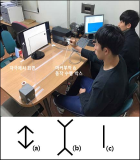
[Purpose] Perception plays an important role in understanding the environment or related objects in order for humans to perform physical movements more effectively. Sometimes they create different movements with different perceptions. Especially, visual perception errors that occur in sports situations can have a considerable effect on performance. Accurate knowledge of the environment in this process of perception is important in performing movements or actions. The purpose of this study was to investigate the effect of learning formation on perception using Muller-Liar illusion diagrams. To measure this, we compared the feedback group that induced knowledge learning and the control group that did not provide knowledge To see if there is a difference. Therefore, in this study, we have provided a visual feedback that can establish the cognitive awareness of the actual stimuli length to subjects, and investigated the changes in their matching action responses. [Methods] A total of 32 young and healthy subjects were randomly divided into two groups (Feedback and Non-Feedback groups). Subjects were asked to match the stimulus size with their index fingers and thumbs. Initially (pre-test), three different visual stimuli (inward, outward, and no arrows) were randomly presented 60 times (20 times each) and the grip sizes were recorded using the Liberty Motion Analysis System (Polhemus Co., America). Then, video clips of two lines merging each other were presented as feedbacks. Post-test protocol was identical to the pre-test protocol. The data were analyzed using the 3-way ANOVA with one RM factor (2 x 3 x 2). [Results] Results showed a significant 2-way interaction effect. Post-hoc results showed significant interaction between stimulus shape and pre/post-tests only in the experimental group. There was a significant decrease in the grip size after feedback in the OUT condition of experimental group. However, in the control group, there was no interaction between stimulus shape and pre/post-tests. [Conclusion] Overall, current results indicates that, while visual illusion can affect the action, the provision of visual feedback can establish the awareness of actual stimulus size and suppress the influence of illusion on action.

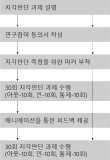

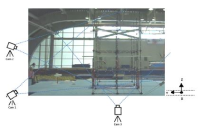
The purpose of this study was to identify the characteristics through technical analysis of dismount to perform the successful landing. The subjects in this study were male gymnastic players of the national team, hish-speed cameras were used to record the salto backward dismount on the parallel bars of the subjects and to study the qualitative and quantitative analysis. The evaluations including feedback of each subjects’problem were as follow: KHH showed early release timing compared to other players. It could be one of factors which can not decelerating the rotational speed, so the correction of posture is needed. NYI didn’t slide to the left at the release phase, and showed big rotation of body compared to other players so the center of mass moved to the rear. The correction of the hand position at flight phase is necessary to perform the V-shaped position. RSD landed in a state where the rotation is insufficient, so the training using elasticity of parallel bars at phase 2, and the correction of hand position are in need. PMS’s rotation angular velocity of body increased consistently, so showed instable land. Therefore the training to ensure the height of flight is required. PEJ showed high vertical position of CM at the release phase which is help for height of flight. He performed ideal V-shaped position, and took a relatively stable landing position. BGR also showed high vertical position of CM and performed ideal V-shaped position, so he landed in a posture in which the most stable. YHS should push vertically rather than horizontally at the moment of release. Especially, the hand position is not on the hamstring but on the back of the knee to perform the ideal V-shaped position. CJY showed little hip angle at the release phase, so he can’t take a position for vertical rise. Also he showed the lowest knee angle and performed rotation and landing in a state that cannot extend the knee. If such problems are corrected, it will be helpful to landing position not only in parallel bars but also in other events.

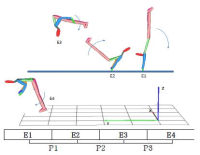
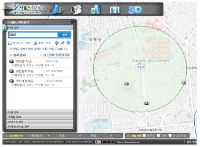
This study measured the accessibility of public exercise facilities within a residental area of a metropolitan community and examined how the accessibility can affect physical activity participation of residents. Initially, a total of 639 residents, who were aged between 19-70, visited Metabolic Syndrome Management Center of the Community Public Health Center, and registered for a Obesity Clinic Program, was listed as potential subjects. And those who responded to Physical Activity Questionnaire were selected for the analyses (n=92, 14.3% of 639). The relationships between physical activity level and accessibility to public exercise facilities were analyzed. Objective distance to public facility was related to ‘volume of participation to vigorous physical activity(r=.209)’, 'total volume of participation to physical activity(r=.206)’. And perceived distance to public facility was related to ‘volume of participation to vigorous-intensity physical activity(r=.235)’. perceived transport time to public facility was related to ‘duration of participation to vigorous-intensity physical activity(r=.239)’, ’volume of participation to vigorous-intensity physical activity(r=.306)’, and ‘volume of participation to total physical activity(r=.273)’. In contrast, the difference between objective distance to public facility and perceived subjective distance to the facility was negatively related to ‘duration of participation to moderate-intensity physical activity(r=-.221)’. The perceived numbers of public facility was positively related to ‘frequency of participation to vigorous-intensity physical activity(r=.237)’, ‘frequency of participation to walking(r=.273)’, ‘volume of participation to walking(r=.251)’ and 'total volume of participation to physical activity(r=.252)’. The predictor of 'total volume of participation to physical activity was perceived numbers of public facility(R2=.153, p=.046). The results revealed that the subjective accessibility to public health facilities was more influential to physical activity participation than the objective accessibility. Further research was warranted while using diverse populations as well as considering a inclusion of environmental factors.


PURPOSE This study aims to analyze research trends on the social capital in sports. METHODS A total of 69 papers published until December 2020 were selected as research subjects. Further, Excel, KrKwic software, and NetDraw function of the UCINET 6 program were used for analysis. RESULTS First, social capital research on sports has shown quantitative growth since 2010. Second, the studies were conducted on sports participants such as general, elderly, college students, adolescents, foreigners, and the disabled, showing the highest frequency of research subjects. Third, quantitative research conducted based on the research method were several. Fourth, single-author studies were the highest. Fifth, as the result of the analysis on the publication journal, the Journal of the Korean Physical Education Association was shown the highest. Sixth, due to frequency analysis of the thesis keywords, “social capital,” “sports participation,” “action intention,” “social capital type,” “living sports participation,” and “youth” were shown the highest. Seventh, as a result of centrality analysis between keywords through the network analysis, “sports participation” in connection centrality, “health-promoting lifestyle” in proximity centrality, and “sports participation” in mediation centrality were found as the highest. CONCLUSIONS The significance of social capital in sports is more important than others because it is a fundamental element for creating a culture where more people can enjoy sports moderately in Korea, where capitalism and liberal democracy were adopted as the governing system. Therefore, this study can be a vital resource significantly contributing to the understanding and active use of social capital, a significant factor in developing sports in Korea.
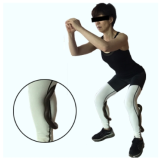
Purpose This study was designed to investigate the effects of weight-bearing exercise and CareRing treatment on cardiovascular responses, popliteal vein functions, and vascular elasticity of 30-40s women who had worked longer than eight hours a day in a standing position. Methods Thirteen subjects participated in 30 min of standing up treatment (STAND), weight-bearing exercise treatment (EX), and weight-bearing exercise with CareRing treatment (EX+RING). Each subject took part in the three trials repeatedly in a counter-balanced order and proceeded with a wash-out period of at least one week between the respective trials. Results The main results were as follows: 1) Significant reduction in EDV, no change in the diameter of popliteal vein, trend of reduction in blood flow of popliteal vein, and increased baPWV, indicating reduction of vascular elasticity of whole body, were shown in the STAND. 2) CO and EF increased significantly, and TPR decreased significantly in the EX. Blood flow velocity and blood flow volume of popliteal vein increased significantly, and baPWV decreased significantly from immediately after the treatment throughout the recovery phase in the EX. 3) HR, CO, and EF increased significantly in the EX+RING. Blood flow velocity and blood flow volume increased significantly in the EX+RING. Diameter of popliteal vein increased significantly immediately after the treatment and decreased significantly at 40 minutes of recovery. TPR and baPWV decreased significantly immediately after treatment compared to the STAND. Conclusions It was concluded that weight-bearing exercises would be effective in preventing venous or cardiovascular diseases occurred due to long-standing in 30-40s women, who are at high risk for such diseases. Furthermore, it would be more effective to combine pressure treatment with CareRing during weight-bearing exercises.

Purpose The purpose of this study was to examine the effects of 16 weeks’ combined exercise training on insulin resistance, inflammatory markers, oxidative stress, leukocyte telomere length, body composition, and daily living fitness in elderly women with type 2 diabetes mellitus (DM). Methods Twenty-eight participants were randomly assigned into one of two groups, i.e., exercise training group (EX: n=14) and control group (CON: n=14). Subjects in EX participated in 3 sessions of 60 min-combined exercise for 16 weeks, whereas subjects in CON were asked to maintain their normal life pattern during the same period. The variables regarding insulin resistance, inflammatory markers, oxidative stress, leukocyte telomere length, body composition, and daily living fitness were measured and compared between two groups as well as between pre-post test utilizing a repeated two-way ANOVA. Results Main results were as follows: 1) Fasting plasma insulin and HOMA-IR tended to decrease in EX, whereas increased significantly in CON. 2) IL-6, TNF-α, hs-CRP decreased in EX, but the changes were not statistically significant. 3) MDA increased significantly and GPx decreased significantly in both EX and CON. 4) Leukocyte telomere length increased significantly in EX. 5) Fat-free mass increased in EX, whereas fat mass and percent body fat decreased significantly in EX. 6) Arm curl, chair stand, sit & reach, tandem test, 10m walking speed, and up & go improved significantly in EX. Conclusion It was concluded that the combined exercise for 16 weeks had a positive effect on improving insulin resistance, increasing leukocyte telomere length, as well as enhancing body composition and daily living fitness in elderly women with type 2 diabetes.

Purpose The study examined the effects of a 12-week high intensity circuit training (HICT) on abdominal fat, physical fitness, blood lipids, and insulin resistance in middle-aged obese women. Methods Thirty obese women, aged 32-48 yrs, were recruited and randomly assigned to either HICT group (TR; n = 15) or control group (CON; n = 15). Subjects in the TR group participated in HICT of which resistance exercise and aerobic exercise were performed with a duration of 40 min/session and 3 sessions/wk for 12 weeks, whereas subjects in the CON group were asked to maintain their normal life patterns. Dependent variables included abdominal fat area, body composition, physical fitness, blood lipids profiles, and insulin resistance index. Analysis of variance with repeated measures with Bonferroni corrections was used to compare the outcomes between two groups. Results Main findings of the present study were as follows: 1) compared to the CON group, the TR group had significant reductions in overall (i.e., body mass index and percent body fat) and abdominal obesity (i.e., waist circumference, total abdominal fat area, visceral fat area, subcutaneous fat area, and visceral fat area-subcutaneous fat area ratio), 2) compared to the CON group, the TR group had significant improvements in health-related physical fitness (i.e., muscular strength, muscular endurance, muscle power, flexibility, balance, and cardiorespiratory endurance), and 3) compared to the CON group, the TR group had significant improvements in fasting lipids, glucose, insulin, and insulin resistance. Conclusions The current findings of the study suggested that HICT would be an effective exercise intervention to improve metabolic complications associated with obesity and poor physical fitness in obese middle-aged women.



[Purpose] The purpose of this study was to determine the influence of complex exercise and chromium supplement on healthe-related physical fitness, appetite regulating hormones, and diabetes risk factors in obese elementary school students. [Methods] The subjects were 32 obese elementary students over 25 kg/m2 to BMI, 8 complex exercise with high chromium supplement group (CE+HC), 8 complex exercise with low chromium supplement group (CE+LC), 8 complex exercise with placebo group (CE+PL), and 8 placebo group (PL). The subjects have performed the exercise program for 70 minutes a day and 3 times a week with aerobic and anaerobic exercise during 12 weeks. Also, low and high chromium supplement group took a peel 50 ug and 400 ug respectively at the same time and place. [Results] There were significant decreases in body fat to CE+HC compared with CE+PL (p<.05) and significant increase in muscle mass compared with CE+PL (p<.05). However, there were no significant differences in body weight, BMI, muscular strength, muscular endurance, and flexibility between groups. For appetite regulating hormones, there is a significant difference to ghrelin in CE+HC compared with CE+PL (p<.05) and there were significant differences to glucose and insulin significantly decreased in CE+HC compared with CE+PL (p<.05) in diabetes risk factors. [Conclusion] In conclusion, there were positive responses for body composition and diabetes risk factors for the twofold cases through complex exercise and high chromium supplement, but not for physical fitness and appetite regulating hormones.

Purpose The purpose of this study was to evaluate the effect of detachable forefoot outsole on muscle activity of the lower extremity during downhill walking. Methods Thirteen male university students (age: 23.5±2.1 yrs, height: 175.7±4.6 cm, weight: 651.9±55.5 N) who have no musculoskeletal disorder were recruited as the subjects. Each subject walked down 20° ramp with forefoot’s design for the detachable outsole’s angle(5°, 10° and 20°) and type(A and B). To assess the myoelectric activities of selected muscles, six of surface EMG(QEMG8, Laxtha Inc. korea, sampling frequency = 1,024 Hz, gain = 1,000, input impedance > 1012 Ω, CMRR > 100 dB) electrodes with on-site pre-amplification circuitry were attached to ES, RF, BF, TA, LG, and MG. For each dependent variable, two-way ANOVA with repeated measures was used to determine whether there were significant differences among forefoot’s design for the detachable outsole’s angle and type (p<.05). When correlation effect was not statistically significant, post hoc analyses were performed using the multiple comparison through bonferroni, and if correlation effect was statistically significant, one-way ANOVA was performed as for the form of outsole which is an inter-group variable in order to find out simple main effect, and the paired t-test was performed to find out the angle of outsole, which is an intra-group variable. Results In IDLS phase, In terms of Rectus Femoris, 10°-B outsole showed statistically higher muscle movement than 5°-B, 5°-A outsole showed statistically higher muscle movement than 5°-B, 20°-A outsole showed statistically higher muscle movement than 20°-B. Among these outsoles, Conclusion 5°-B outsole was found to the most useful outsole for improving stability and controlling the bodily movement due to the body weight load when walking down the ramp.







